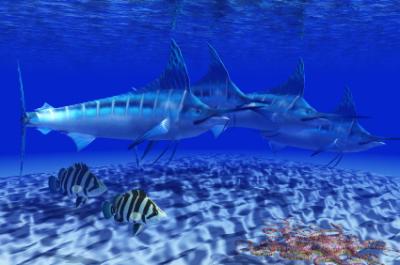Setting Up a Marine Aquarium

There is nothing quite as elegant and beautiful as marine fish or a coral reef. Because not everyone has the ability to deep sea dive to view these animals, many people opt to set up a marine aquarium and see aquatic nature first hand from their living room.
This article will cover the basics of what you'll need to get started with your first marine aquarium. You can find all of these items online at places that sell aquarium and aquarium accessories such as Swell UK.
In general, keeping a fish-only tank is probably easiest for a beginner, but a reef tank certainly isn't impossible.
Fish Tank
The first thing you'll need is an aquarium and stand. Get the largest sized aquarium you can possibly afford. For a marine aquarium, get at least a 30 gallon tank. Rectangular aquariums are best because they have more surface area at the top of the tank, plus it gives the fish more swimming room. Most fish swim horizontally and not vertically.
Get an aquarium stand that is appropriate for your tank. Use a stand that is designed for aquarium use and don't use other household furniture to set your aquarium on. Water is very heavy and you don't want to take the chance that what you've set your tank on isn't sturdy enough to hold your aquarium. You don't want your fish tank to come crashing down.
Filtration
As with any fish tank you will need a good quality filter that is of the appropriate size and power for your tank. Most marine aquariums usually also use a protein skimmer. A protein skimmer is used in addition to your regular aquarium filter to remove more waste than is removed by the filter alone. It is very important to maintain excellent water quality in a marine tank especially.
Lighting
The type of lighting you will need depends on what animals you plan on keeping in your tank. If you have a fish-only tank then a standard aquarium hood with a fluorescent lamp will suffice. If you are setting up a reef tank then you will need either metal halide or led lights.
Ground Fault Circuit Interrupter
The combination of water and electicity is dangerous and saltwater conducts electricity even more so than freshwater. A ground fault circuit interrupter will disrupt the flow of electricity in the event of accidental immersion such as heater breaks, lighted hood dropped into tank, ect.
Heater
You're going to need an appropriate sized heater for your aquarium and also a thermometer to measure the temperature. For a 30 gallon tank you'll need about a 150 watt heater to keep the water temperature about 74-78 °F or 23-26 °C.
Substrate
For a marine aqarium you'll want to use a different substrate to cover the bottom of your aquarium than you would for a freshwater tank. Use crushed coral or sand (for aquariums, not sandbox sand) instead of the gravel that is usually used for a freshwater aquarium.
Live Rock
Live rock gets it's name because it is rock that is teaming with algae, sponges, crustaceans, and other living organisms. Live rock serves as a biological filter because is home to beneficial microorganisms that feed on waste produced by your fish. These organisms break down aquarium waste products into compounds that aren't harmful to the fish. Live rock also adds to the overall decor of your tank. It comes in all shapes and sizes and is not only good for your fish, but is also an aesthetically pleasing addition to your tank. There are two types - cured and uncured. Uncured live rock contains all of the organisms found on it in its natural state. Cured live rock has been processed so that any unwanted or dying organisms have been removed.
Salt Mix and Hydrometer
You can buy packets of marine salt mix that approximate the conditions of seawater. Don't use table salt or freshwater aquarium salt. The purpose of the hydrometer is to measure the specific gravity which allows you to determine the salinity of the water. To approximate seawater conditions, the specific gravity should be 1.025.
Chlorine/Chloramine Removers
Most tap water has been treated with chlorine or chloramine so to make it safe for your fish you'll need to use a chlorine/chloramine remover.
Don't Add the Fish Yet!
You must first cycle your tank. After you have everything set up, including the live rock, leave your tank empty of fish until it cycles. Leave the filter and protein skimmer running. You need to let your tank have enough time to acquire the proper levels of nitrifying bacteria that break down fish waste before adding the fish. If you add the fish before your tank cycles they will not survive. The amount of time it takes will vary. If you use cured live rock it will take less time than if you use uncured live rock. Possibly about a week for cured live rock, but perhaps up to 4 weeks if you use uncured live rock.
And finally, you should purchase a good water test kit that allows you to measure the pH, ammonia, nitrite, and nitrate levels of the water. Be sure to test these water parameters before adding your fish.
